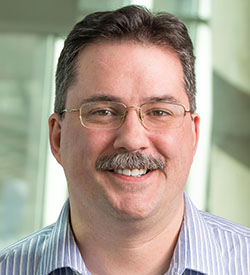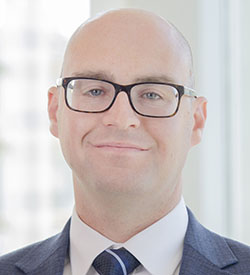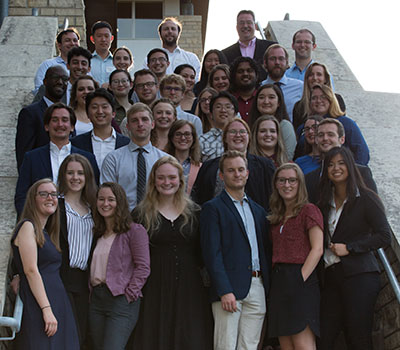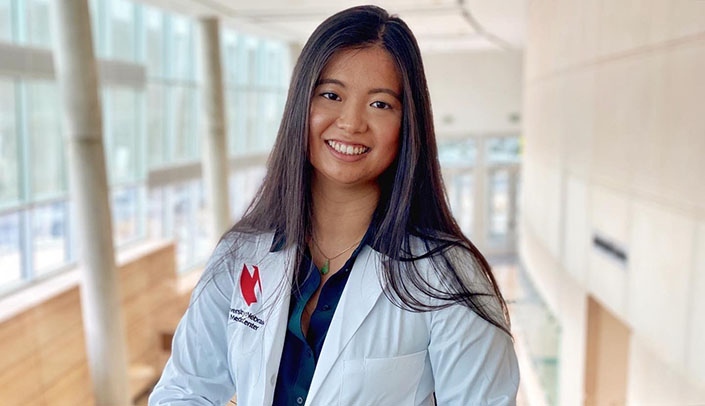When Linda Huynh was first considering medical school, she didn’t know that MD-PhD programs existed.
But when she learned about them, she realized she’d found her niche.
Huynh, who was a clinical trials coordinator after graduating from the University of California in 2016, noticed that her lab was producing "multitudes of data points," and she admired the colleague who had the skill set, capability, interest and passion to look at that data.
"That ultimately resulted in me extending my gap year time to do a master’s in biomedical and translational science," she said. "That’s where my mindset shifted."
That mindset? Justin Mott, MD, PhD, describes it as the motivating force behind every MD-PhD students’ decision to embark on an eight-year odyssey to earn both advanced degrees:
"You want to help people as a physician," Dr. Mott said. "But you can’t leave the research behind."
For Huynh, once she decided on the MD-PhD route, she deliberated for a long time before choosing UNMC’s program.
"I was looking for a program with a history of taking students who are working in clinical research and also a strong interclass mentorship," she said. "On interview day, I was quickly connected with a lot of people who had a similar mindset."
 |
|
'This is such a challenging path. The need for support, for the organization itself to facilitate student success, it really helps our students come out of it with a positive experience at the end.' Justin Mott, MD, PhD |
UNMC established its MD-PhD program officially in the early 1990s, although Dr. Mott said students had been earning dual degrees long before that – they had just been following their own paths in doing so. Today, the MD-PhD program essentially follows a "2/4/2" timeline, Dr. Mott said – two years in medical school, four years to earn the PhD, and two years to finish medical school.
There usually are four-to-six MD-PhD students each year, with about 40 total attending UNMC now, said Jen Brady, administrator for the program. Brady, who coordinates the challenging interview process and leads retention and engagement efforts said the most important part of her job is "making sure the students feel supported as they’re navigating the journey before they get here and while they’re here."
It’s a job she does well, Huynh said:
"I committed to UNMC because of what I saw on the MD-PhD side. Jen Brady is fantastic — she takes care of us and makes sure we have all the information we need, takes us through everything step-by-step."
And there can be a lot of steps. Dr. Mott pointed to two pivotal "social pressure points" in the MD-PhD track: when the bulk of their classmate go into clinical rotations and the MD-PhD students go to the lab, and when the traditional students earn their MDs – while the MD-PhD students still are only about halfway to their first doctoral degree.
"This can be a tough transition," Dr. Mott said. "Moving into the lab, there’s a lot of uncertainty — that’s the nature of research. They have to investigate their own personal drive and reasoning as they switch, and then they have to watch their friends do something else."
The second point Dr. Mott mentioned was when the MD-PhD students’ MD colleagues graduate and match.
"The MD students are going through the match, they’re finding out where they’re going to be training, and they’re celebrating their terminal degree," Dr. Mott said. "Our MD-PhD students, not only are they not achieving that milestone, but they’re not yet at the point where they’re receiving their first degree of the two. So we try to recognize that point now — ‘Look at all you’ve done over the past four years. It’s not on a piece of paper, and it doesn’t involve a cap and gown yet, but you are making it.’
"That’s one of the reasons I like the size of our program; having about four to six students a year allows our MD/PhD students to have classmates who are going to face those transitions with them."
There’s also a network of support — both official and unofficial.
 |
|
'The program takes care of its own . . . (It) has gotten good at reaching out to researchers in a collaborative manner, which allows MD-PhD students to understand what options are available. From my position as a physician researcher, I feel like I can help a lot of students.' Michael Baine, MD, PhD |
"The program takes care of its own," said Michael Baine, MD, PhD, assistant professor of radiation oncology and a graduate of the program. Dr. Baine is now mentoring Huynh, as well as Joseph Carmicheal, PhD, who is now a UNMC medical student — again — after earning his PhD.
"The level of support here at UNMC, at each and every segment, is fantastic," Dr. Carmicheal said. "There are multiple instances when the program itself, at an institutional level, says to reach out if there’s difficulty. There are different mentors. There are peer support groups. And there’s a really nice collegial atmosphere, an interaction between those who have been through whatever transition stage, and they discuss it with their juniors — either randomly, or we set aside instances as a program, such as the annual summer retreat for the MD-PhD program."
Dr. Carmicheal, for example, made a connection with Huynh because of a shared interest in radiation oncology. "Having that interest in common helps you form relationships naturally," he said.
And when Dr. Carmicheal was a young student, it was Dr. Baine who mentored him.
"That tutelage, that support, it’s one of the things that’s inherent in this program at UNMC. Everyone is there for each other and helps you through every step of the way," Dr. Carmicheal said.
For Dr. Baine, being available to his MD-PhD peers and juniors allows him to help at what he considers another pivotal point in the process: When the students choose their research mentor.
 |
| The MD-PhD students at this summer's retreat.(Photo by Jen Brady) |
"The program has gotten good at reaching out to researchers in a collaborative manner, which allows MD-PhD students to understand what options are available," he said. "From my position as a physician researcher, I feel like I can help a lot of students. I have my fingers in a lot of things, and I know a lot of people on both sides — clinical medicine and bench research."
"This is such a challenging path," Dr. Mott said. "The need for support, for the organization itself to facilitate student success, it really helps our students come out of it with a positive experience at the end.
"The NIH has recognized, the institute of medicine has recognized the need for physician-scientist. We graduate in the U.S. about 18,000 medical students a year – we graduate about 600 physician-scientists, through formal MD-PhD programs in a year. And that need is high even if the numbers are small."
For Huynh, the decision boiled down to asking herself a question:
"Do I see myself being a doctor without the research? Am I going to be craning my neck and seeing what my colleagues are up to on that side of the spectrum?"
The answer, she said — like Drs. Baine and Carmichael before her — was that she needed to do both. And despite the road ahead, it’s a decision that still seems inevitable to her.
"As my classmates are getting ready to go into clinicals, yes, I’m excited for them, and I’m a little bit jealous about not being able to apply everything we’ve learned in this last year into clinical practice," Huynh said, "But also, the same excitement that they have for clinicals, I have for going into my grad years. I’ve missed the lab."
